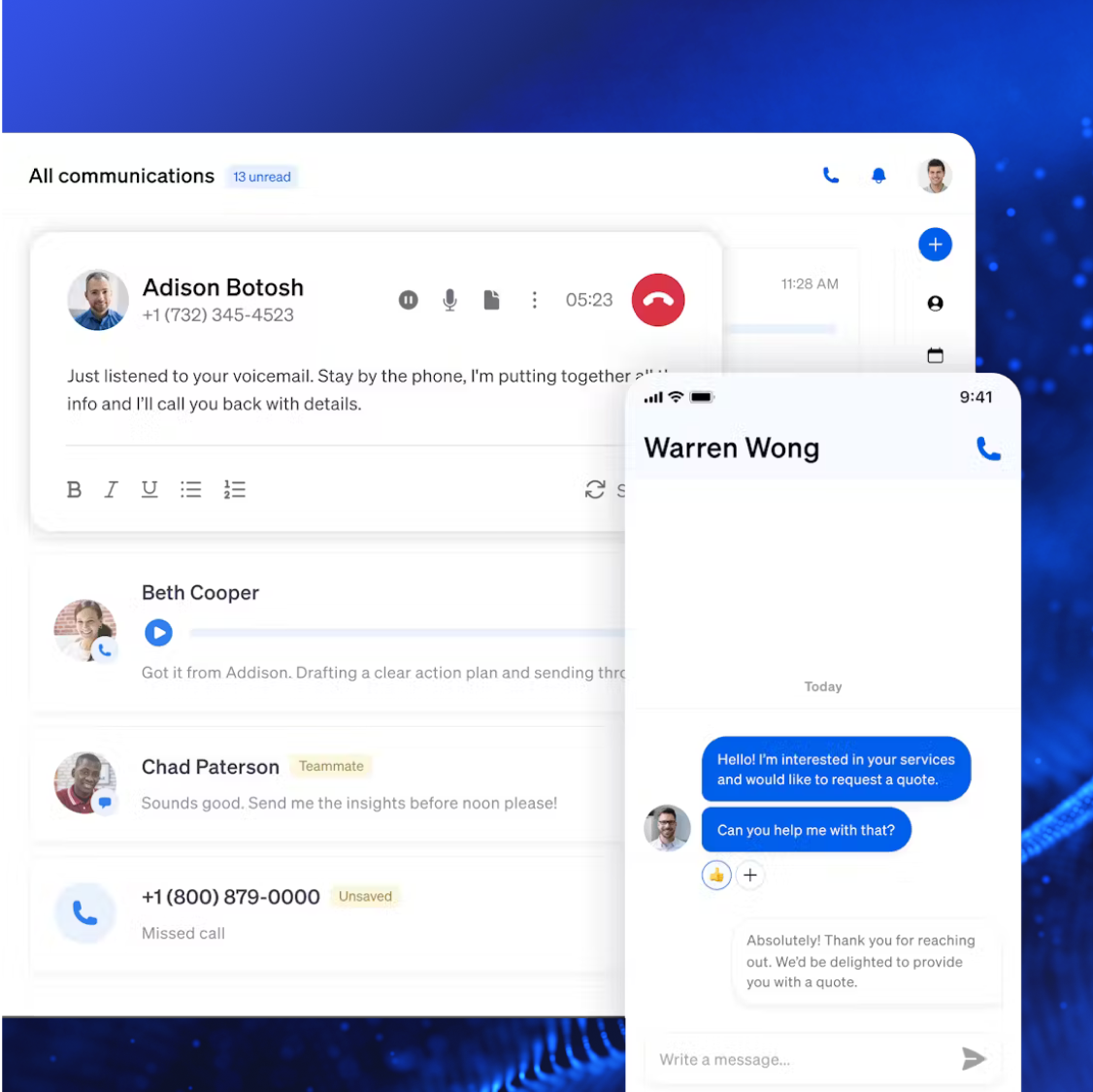Good employees are productive employees — but it’s not all just about motivation and work ethic. It can sometimes also be that they don’t knwo how to create a productive workspace.
Managers, supervisors, and company executives should always be striving to increase the productivity of their companies and their individual employees.
An often overlooked strategy in improving employee productivity is ensuring that the team’s surroundings are considered.
Research has shown that an “empowered office environment” can increase employee productivity by 25 percent.
It’s easy to see why this is true. If you’ve ever tried to work in an uncomfortable, uninviting space, you can attest to the difficulty of getting anything done in an environment such as that. A comfortable and inviting space has proven to actually boost productivity.
Avoid having a drab work office set-up and instead focus on encouraging a positive work environment.
Check out these five ways you can optimize your area for a productive workspace.
1. Redecorate with purposeful color
Color is not just about personal preference. The color of a room, a cubicle, or a conference space can affect people’s mood and outlook in a subtle but noticeable way. Some colors encourage calm and peace, while others bring out anger and attention-to-detail —all of them have an effect.
Unfortunately, most office spaces are “decorated” in drab, lackluster colors, such as beige and off-white. Nothing is less inspiring and more yawn-inducing than this color palette.
Update your office space with intentional colors, which you can select based on your field and the type of reaction you’re hoping to get from your employees.
- Blue — shades of blue tend to bring out calm, clear thought and promote a sense of peace and focus. This is the most reliable choice for increasing employee productivity regardless of your field.
- Red — decorating in reds will tend to increase your employees’ heart rate and give a sense that time is passing faster than it really is. This is an appropriate choice for fields that require employees to be physically active and high-energy.
- Green — most people react to greens by feeling calm and soothed. Green, therefore, is an apt color choice if your employees are working high-stress jobs, and you would like them to be able to feel more relaxed.
- Yellow — shades of yellow are most often associated with positive emotional responses, and are therefore not encouraged in traditional office settings. However, yellow can be a good choice for creative fields, where employees need to be consistently generating new ideas.
Regardless of which color you choose for your office space, you can incorporate different shades by painting walls, swapping out lobby furniture, or adding accent pieces such as vases, posters, and wall art.
2. Assess your workspace lighting
To create a space where employees can be productive and original, you need to make sure that there’s proper lighting throughout. After all, if it’s so dark that employees can’t even read their notes, then they aren’t likely to be very productive.
Ideally, a workspace should have large windows or skylights and plenty of natural light. If your space doesn’t have this, then it would be ideal to start a construction project to install windows.
Unfortunately, budget and building restrictions don’t always allow for that.
If you’re noticing that your office space is dark and dreary, but you can’t add any more windows, then bring in artificial lighting that looks natural.
Install large overhead lights that send out natural-looking light to a wide swath of the office space, and bring in floor lamps wherever else possible. It’s best to have multiple sources of light.
If you really want to step up your game, then bring in some lights designed for use in light therapy — they can be helpful to boost employee mood during winter months, even for employees who don’t have diagnosable seasonal depression.
As you’re overhauling the lighting situation in your office, pay careful attention to the type of light that you’re bringing in. Too much light can actually be a bad thing.
It’s best to avoid concentrating the light at one central source, as this can end up being overwhelmingly bright, which can be detrimental to those with migraines or sensitive eyes. In addition, avoid fluorescent lights, as these can also be triggering for migraines.
Opt instead for softer, more natural-looking light sources.
3. Get comfortable andsupportive furniture
When you’re reworking your office space, it isn’t just about how the space looks, but how it feels as well.
Take a walk through the space and note the chairs, desks, and tables that employees use. Are they comfortable? Do people seem to be fidgeting or constantly readjusting? Are the chairs the right height and size for the desks?
Furniture problems can become not only an unnecessary distraction, but they can also cause physical pain for employees. Uncomfortable chairs can exacerbate back issues, for example, which then means that your employees are either in pain while they try to work, or that they have to take extra breaks to walk around and stretch.
While it may feel like you’re saving money by not updating and upgrading your office furniture, in the long run you’re only hurting your own productivity and employees.
Invest in new furniture, and search for chairs and desks that are designed for people to sit at for most of the day.
Chairs, for instance, should have:
- Armrests
- Sufficient back support, at adjustable levels if possible
- An adjustable height
- An adjustable back angle
- Appropriate dimensions for the corresponding desks
If possible, invest in several different varieties, so that employees can choose the most comfortable for themselves, including standing desks and alternative chairs.
Although you’ll be spending money in the short run, in the long run your increased productivity will benefit the company.
4. Create a refreshment station
Getting work done is extra challenging when you’re fighting off a growling stomach or a parched throat. And, if you forgot to bring your water bottle or your mid-morning snack, then your only option is to suffer through or to dip out of the office for a snack run.
Or, option three: you could head to the office refreshment area.
A snack and drink station can help to keep your employees on track by providing them with the tools their bodies need to stay alert and healthy. A well-stocked snack bar can also provide a gathering area for employees, which can provide much-needed break time and collaboration opportunities.
For best results, stock your refreshment area with a variety of options.
Drinks should include at least:
- Coffee, with sugar and creamer
- Tea, with sugar and creamer
- Hot chocolate
- Cold water
For an even better drink selection, you can also include iced tea, flavored waters, or soft drinks.
Snacks should also include a variety, taking into account potential food restrictions such as gluten intolerance and nut allergy.
Ideally, all of these should be free of charge, so that employees can take advantage of the refreshment area without feeling they are wasting money.
You may choose to include fancier or larger additional snacks/beverages at a cost, or to provide employees with rationed “vouchers” so that the refreshment bar isn’t misused.
5. Encourage individualized workspaces
The previous four tips have focused on things that you, as a manager or supervisor, can change about the office space.
However, it’s important to also acknowledge employees’ ability to make their own space productive for themselves.
Within assigned and individual workspaces, encourage and allow employees to put up pictures, posters, calendars, etc., and to bring in any keepsakes, knick-knacks, or other office accessories. To promote this, provide free thumbtacks, paper clips, staples, and tape, so that employees can decorate their spaces without having to purchase basic office supplies.
Individualized workspaces can make employees feel comfortable and at home. Photos of loved ones can provide calm during stressful days, for instance, and keep employees from getting overly anxious.
Give employees the power to control their own small spaces, and you’ll begin to see the positive effects leak into their job performance as well.
Overall
As you’re making changes to the office, keep in mind that employee feedback is crucial. While these tips will improve the productivity of the vast majority of workplaces, there are always exceptions.
And, since the goal is to help your employees get their work accomplished, their opinions and preferences should absolutely be taken into account.
If you don’t have many coffee drinkers in the office, then perhaps the refreshment station can focus more heavily on tea and hot chocolate. If you don’t have assigned spaces for each employee to individualize, then perhaps the entire group can come together to decorate a shared working space or conference room.
You can also consider additional pieces of office productivity, depending on your employees and your field. Many offices, for example, find increased productivity when there are live plants in the room. Others find that soothing scents can help set the stage for a productive day.
The key, as with any employee support measure, is to come up with ideas and tirelessly test them out until you find a few that help boost your group’s work output and overall productivity.















 VoIP
VoIP 







